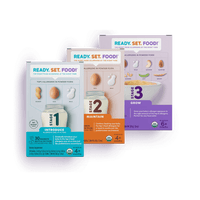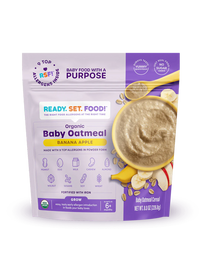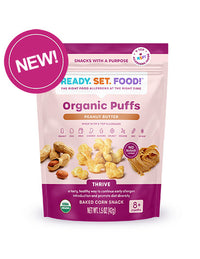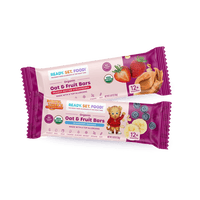If you’re breastfeeding and going back to work, or planning other time away from baby, you’ll need to know how to safely store and freeze your breastmilk. Learn safe temperatures for storing and freezing breastmilk, along with other vital safety tips.
Is there a “better” way to give/store breastmilk?
Freshly expressed breast milk has more vitamins, antioxidants, and bacteria-fighting properties than refrigerated or frozen breastmilk. Plus, the nutritional balance of fresh breastmilk best reflects baby’s health needs at the time. Still, though, refrigerated or frozen breastmilk holds plenty of nutritional value for baby (including bacteria-fighting properties that formula doesn’t have).
Whenever you express (pump) breastmilk and don’t plan to give it to baby right away, though, you’ll need to store it properly so it’s safe for baby to drink. Safe breastmilk storage starts with proper, clean pumping.
How to pump breastmilk cleanly and safely?
- Always wash your hands thoroughly before pumping. Use either soap and warm water, or hand sanitizer with at least 60% alcohol.
- Make sure your breast pump is clean and sanitized, following the CDC guidelines here. This way, harmful bacteria won’t grow on your pump parts.
- Make sure the pump tubing is not moldy and the other pump parts are not soiled. Always throw away moldy tubing immediately---only pump when the kit and tubing are clean.
- If you rent or otherwise share a pump kit, clean all the pump parts with a disinfectant wipe before you pump.
How to safely store breastmilk?
You can safely store breastmilk at room temperature, in the fridge, or in the freezer. However, breastmilk is only safe to store at room temperature (77 degrees Fahrenheit or cooler) for up to 4 hours.
If you won’t give the freshly pumped breastmilk to baby within 4 hours, you’ll need to refrigerate or freeze it. Refrigerate or freeze the breastmilk right away.
You’ll also need to store breastmilk in a cooler bag if you need to transport it between locations (like from work to home), especially if it’s past the 4-hour mark.
Breastmilk can be safely stored in the fridge for up to 4 days if it was freshly pumped, and for 1 day (24 hours) if it was previously frozen. If you don’t use refrigerated breastmilk within that safe timeframe, you’ll need to throw it out---don’t freeze it.
Always label breastmilk with the date you stored it.
Store breastmilk in the back of the fridge (on the shelf above the vegetable drawers) or back of the freezer, where it can get the coldest and where the temperature stays the most consistent. Don’t store it in the fridge or freezer door, because then it will be subject to temperature changes whenever you open the door.
Regardless of the safe temperature you store breastmilk at, you’ll also need to select the right type of container for safe storage.
- Use breast milk bottles, breast milk bags, or food-grade glass or plastic containers that have tight fitting lids.
- Don’t use any bags or bottle liners that weren’t specifically made to store breastmilk.
- Don’t use any plastic container with #7 plastic, as that indicates that the plastic may contain BPA (which is unsafe for babies).
How to safely freeze breastmilk?
If you want to safely store your breastmilk for longer than 4 days, you’ll need to freeze it. Always freeze breastmilk right after expressing if you’re planning to freeze it. This will preserve the quality of the breastmilk and ensure that it won’t go to waste after a few days.
You can safely freeze breastmilk for up to 9-12 months, as long as it’s expressed using a clean, sanitary pump. However, for the best safety and quality, it’s recommended to use breastmilk within 6 months of freezing it.
Freeze breastmilk in portions that equal (or roughly equal) the amount that you’ll give baby at one feeding. Or, freeze it in 2-4-ounce portions. This will help you avoid wasting breastmilk. If you need to, you can mix multiple containers of frozen breastmilk after you thaw them.
Store breastmilk at the back of the freezer, as that’s where the temperature is most consistent. Don’t store it in the freezer door. Also, if your freezer is self-defrosting, don’t store breastmilk near the walls
Make sure the containers you choose are freezer-safe (that they won’t crack when frozen). Breastmilk expands when frozen, so you’ll also need to leave it room to expand. If you’re filling a bottle or breastmilk bag, leave a quarter of the bag empty. If you’re filling another food-grade container, leave about an inch empty at the top.
Never refreeze previously frozen breastmilk that you’ve already thawed. Refrozen breastmilk is unsafe for baby.
Learn more about how to safely freeze and store breastmilk:
How long can breastmilk be safely stored/frozen?
Use this chart as a guide to how long you can safely store and freeze breastmilk, based on CDC guidelines:

Regardless of how you store breastmilk, if baby does not finish their bottle, you’ll need to feed them the leftover breastmilk within 2 hours. Otherwise, you’ll need to throw out the leftover breastmilk. This is because bacteria from baby’s mouth can start to grow and contaminate the bottle of breastmilk after 2 hours.
Keep baby safe---dispose of leftover breastmilk after 2 hours!
How to safely thaw out frozen breastmilk?
There are three ways to safely thaw out frozen breastmilk: under lukewarm running water, in a container of lukewarm or warm water (99 °F or less), or overnight in the fridge.
When thawing out breastmilk, follow these guidelines:
- Remember “first in, first out” --- the oldest portions of breastmilk should be thawed first, as breastmilk’s quality lessens the longer it’s frozen. Labeling portions beforehand will help you identify the oldest portions.
- Don’t let breastmilk thaw out at room temperature.
- If you decide to keep breastmilk at room temperature after thawing, you’ll need to feed it to baby within 1-2 hours. After this timeframe, discard any unused breastmilk.
- If you thaw breastmilk in the refrigerator, be sure to use it within a day (24 hours) after it’s completely thawed out.
- Breastmilk tends to separate into layers when frozen, with the fat rising to the top. So, once it’s thawed, you’ll need to mix the breastmilk by swirling or shaking. (Shaking won’t damage the nutrients in the breastmilk.)
- Never use a microwave to thaw or heat breastmilk. Never use boiling water to thaw or heat breastmilk, either. Microwaving or using boiling water destroys the valuable nutrients in the milk. It could also create hot spots that could burn baby’s mouth.
- Never refreeze previously thawed breastmilk!
- Never add fresh breastmilk to thawed breastmilk!
More tips for safe breastmilk storage/serving after storage.
- If you’re giving the stored milk to a daycare or childcare worker, label the container with baby’s name and the date of storage. Be sure to follow your daycare/child care provider’s requirements for storage and labeling.
- If you’re traveling for any reason (from work commutes to flights), you can store freshly pumped breastmilk in a cooler pack with frozen ice packs for up to one day (24 hours) during a commute. Then, freeze or refrigerate the breast milk right away, or give it to your baby right away, once your trip is finished
You can serve stored breastmilk at room temperature, cold, or warm. If you choose to warm stored breastmilk, hold the storage vessel in a container of lukewarm water for a few minutes or until it has reached body temperature (98-99 ° F). Or, use a bottle warmer. Don’t let the temperature of the milk exceed 104 ° F.

What Toddlers Eat In A Day: 12-18 Months Old
Looking for ideas of what to feed your 12-18 month old little one? ...

New Study Shows That Infant Anaphylaxis Usually Resolves With One Epinephrine Dose
A recent study has shown that, when infants experience severe aller...

Pregnancy Nutrition: What To Eat In The First Trimester
What to eat in the first trimester that will nourish your body, pro...

Formula Feeding Amounts: How Much Formula Should You Feed Baby Per Day?
How much formula should baby drink per day? It depends on their age...

What Baby Eats In A Day: 6-12 Months Old
Looking for ideas of what to feed your 6-12 month old little one? H...
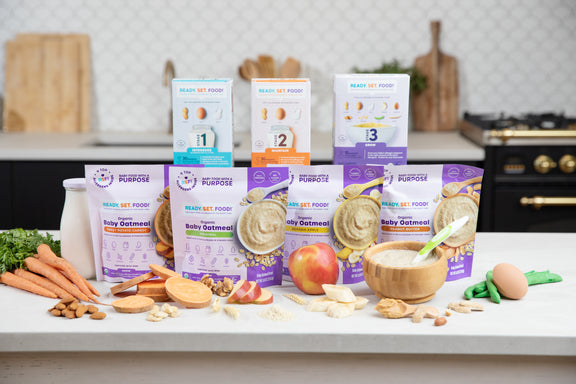
What To Look For When Choosing An Early Allergen Introduction Solution
Medical guidelines recommend early allergen introduction – the earl...
All health-related content on this website is for informational purposes only and does not create a doctor-patient relationship. Always seek the advice of your own pediatrician in connection with any questions regarding your baby’s health.
These statements have not been evaluated by the Food and Drug Administration. Products are not intended to diagnose, treat, cure or prevent any disease. If your infant has severe eczema, check with your infant’s healthcare provider before feeding foods containing ground peanuts.
